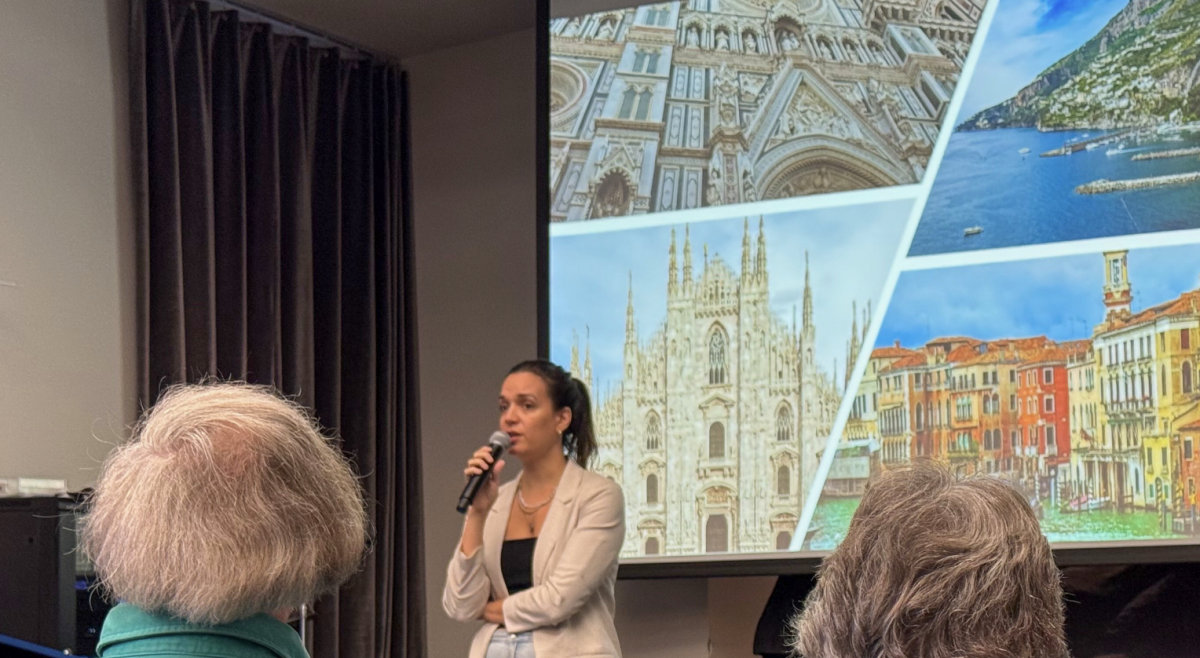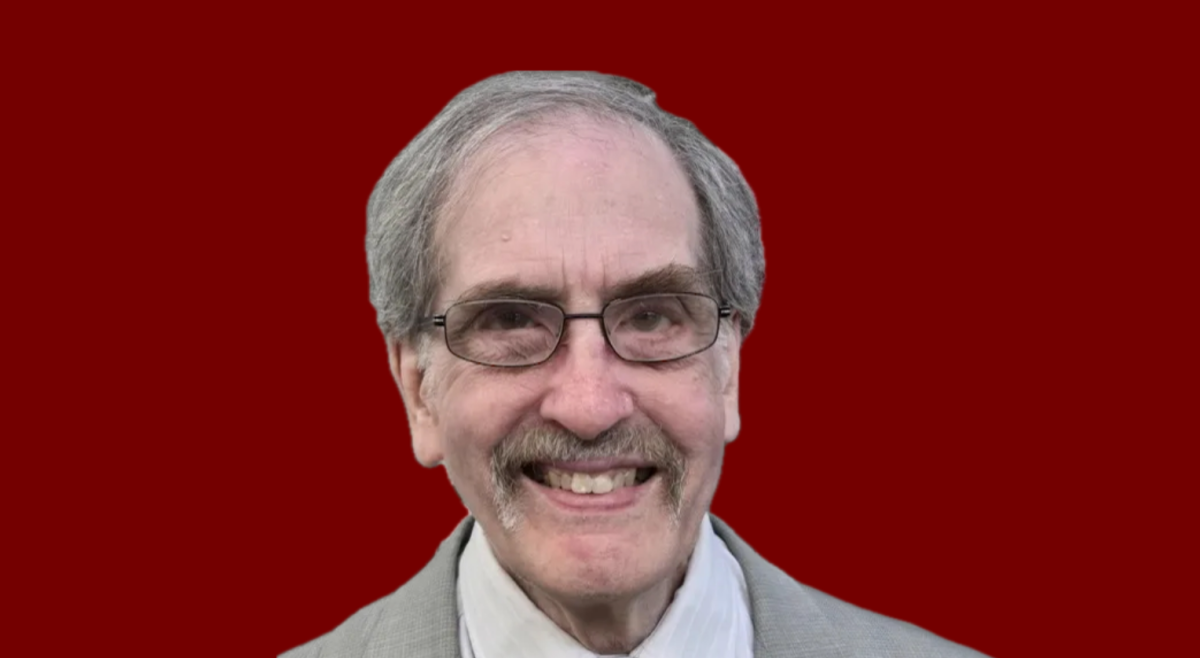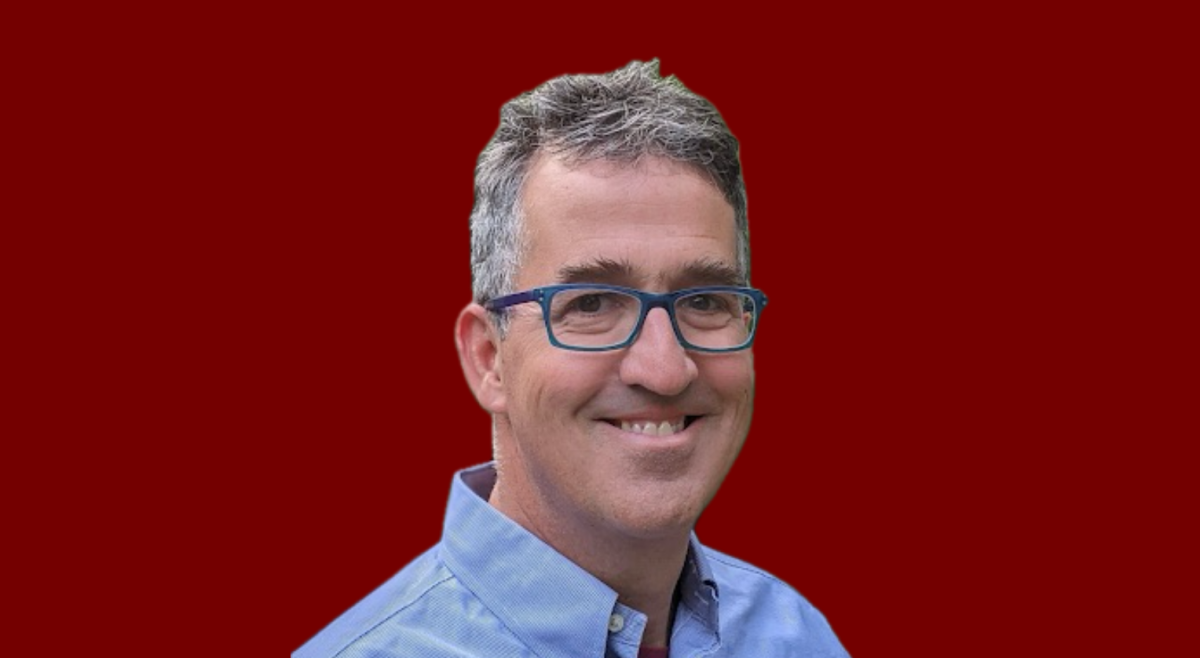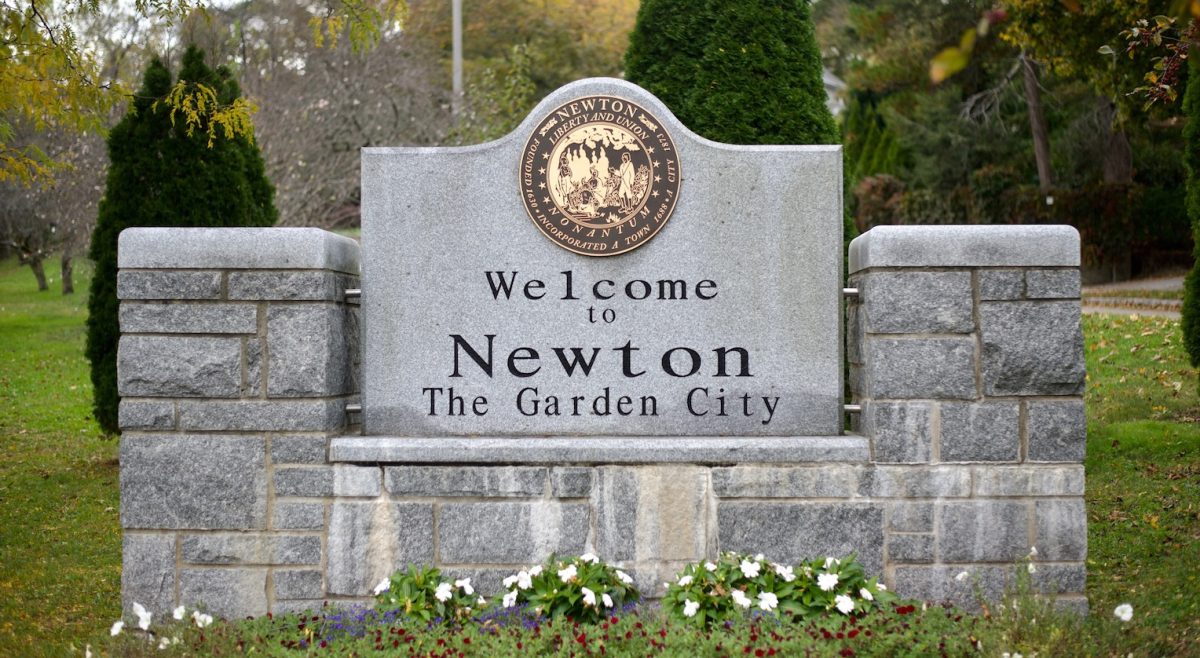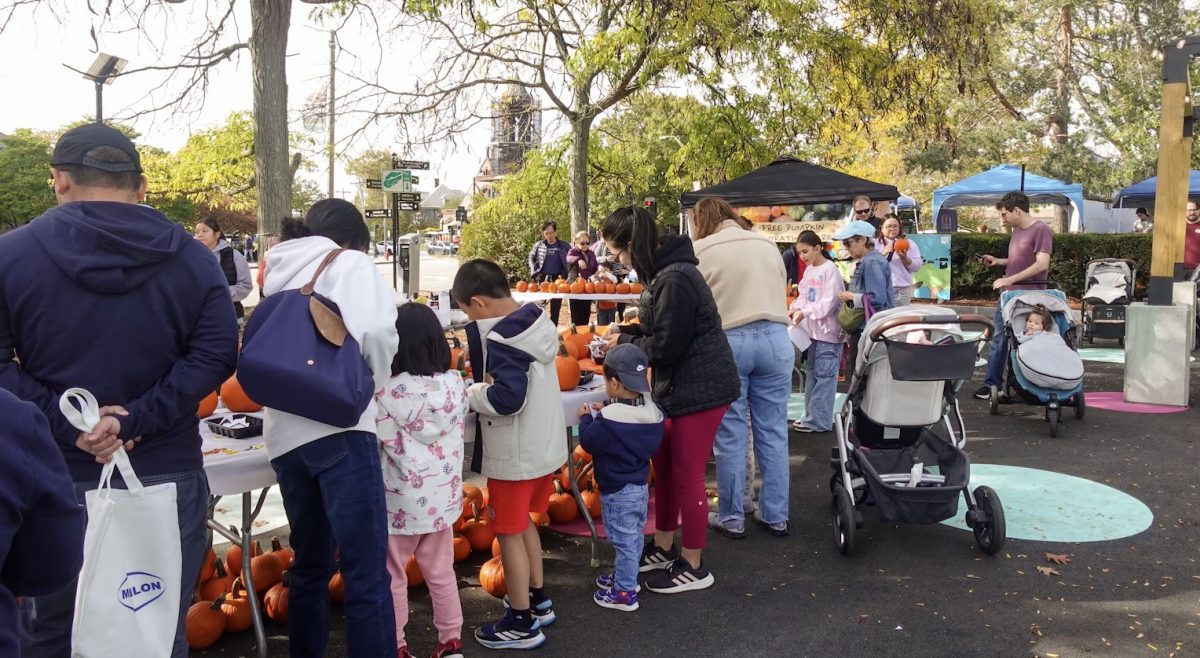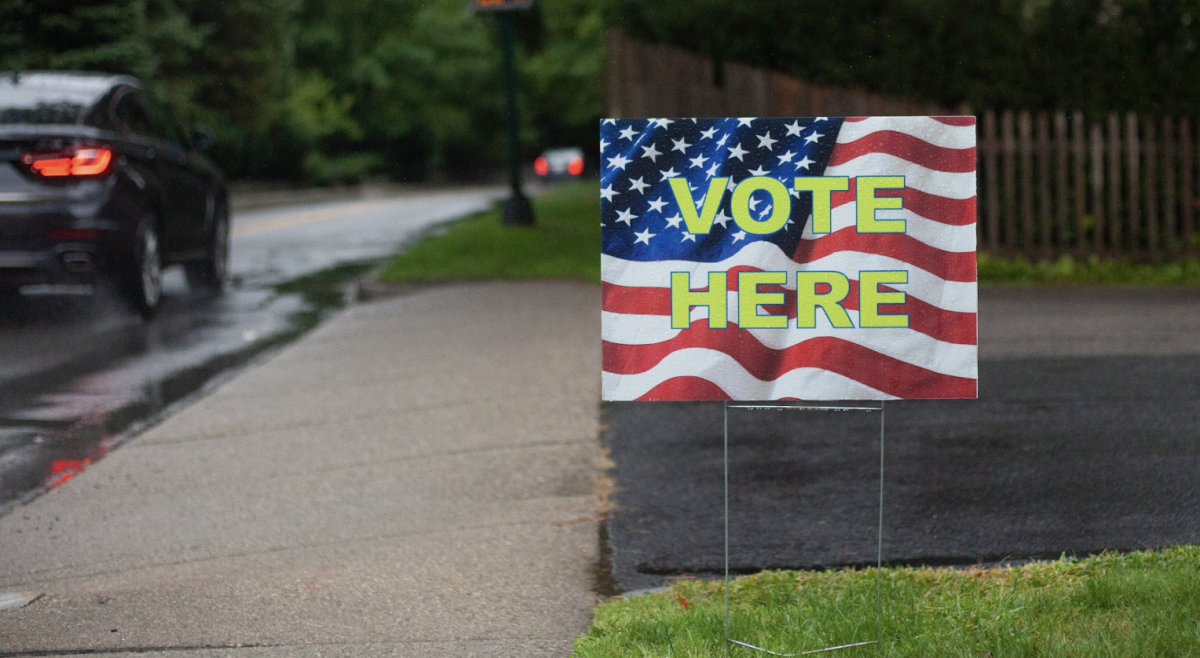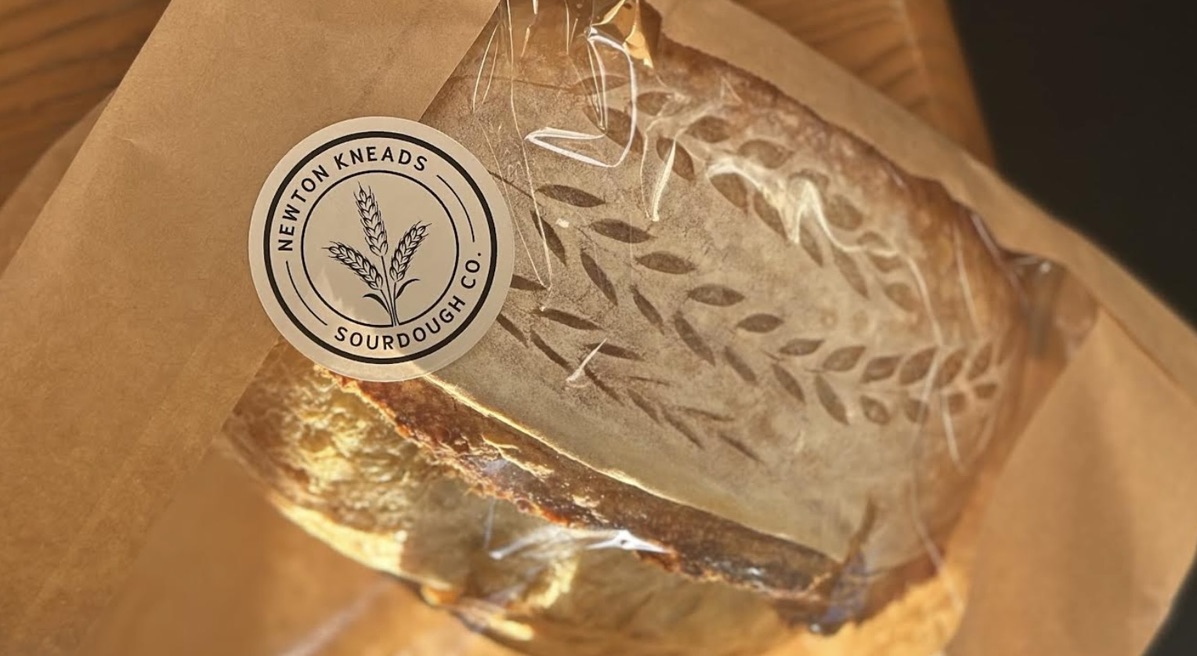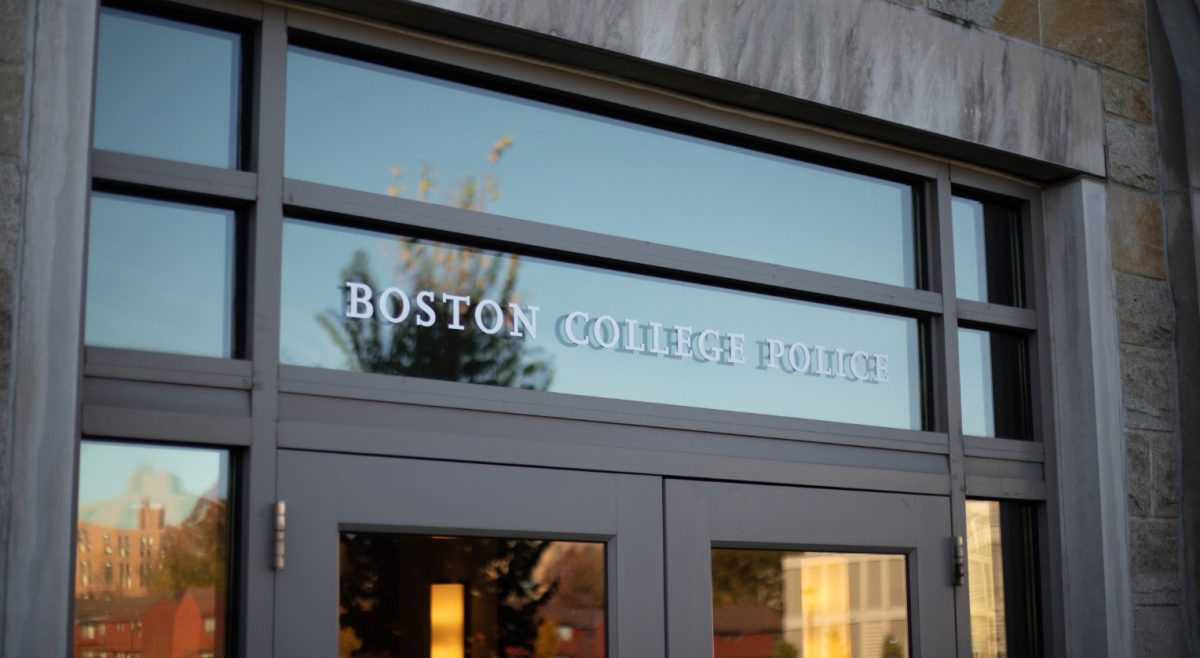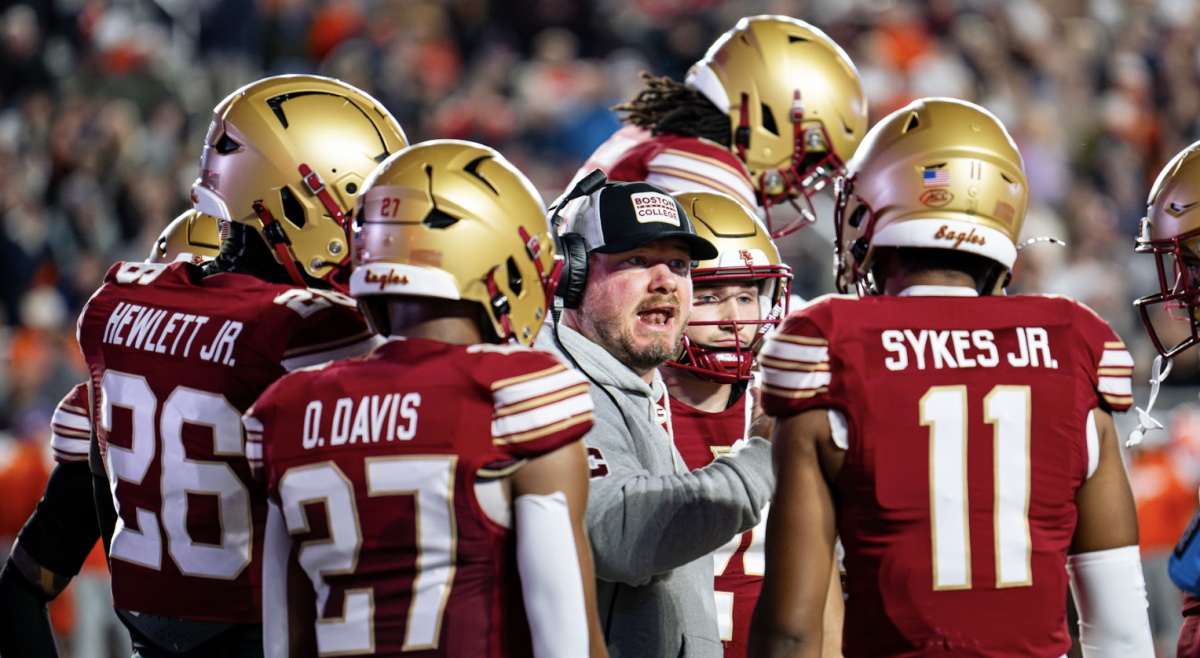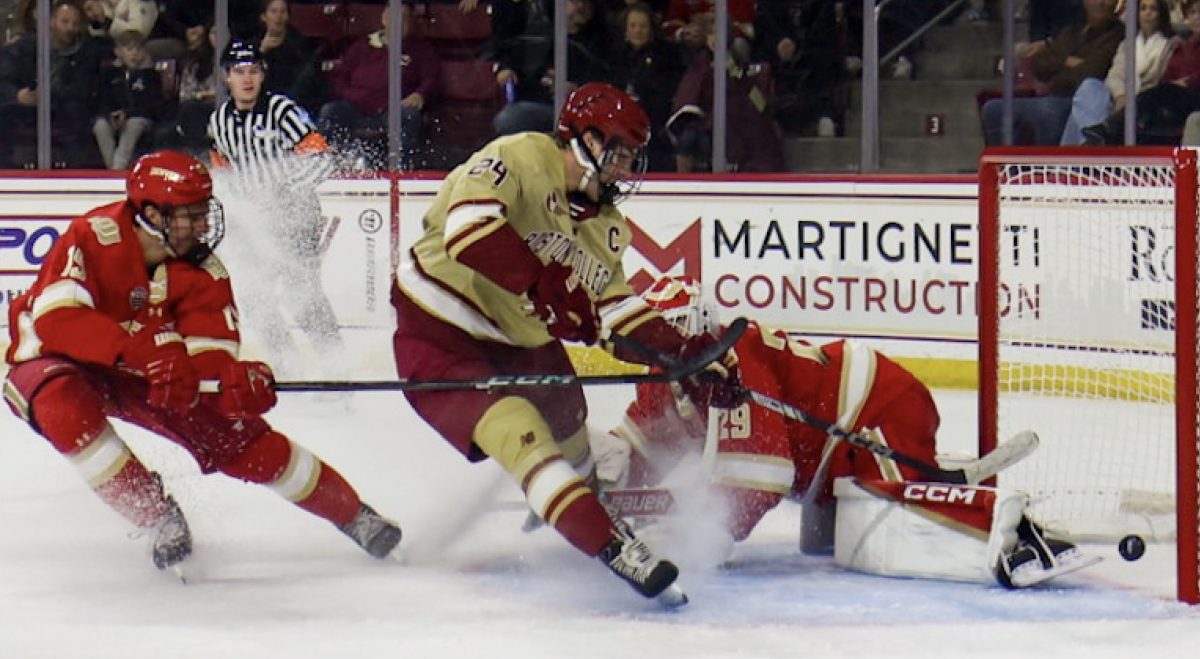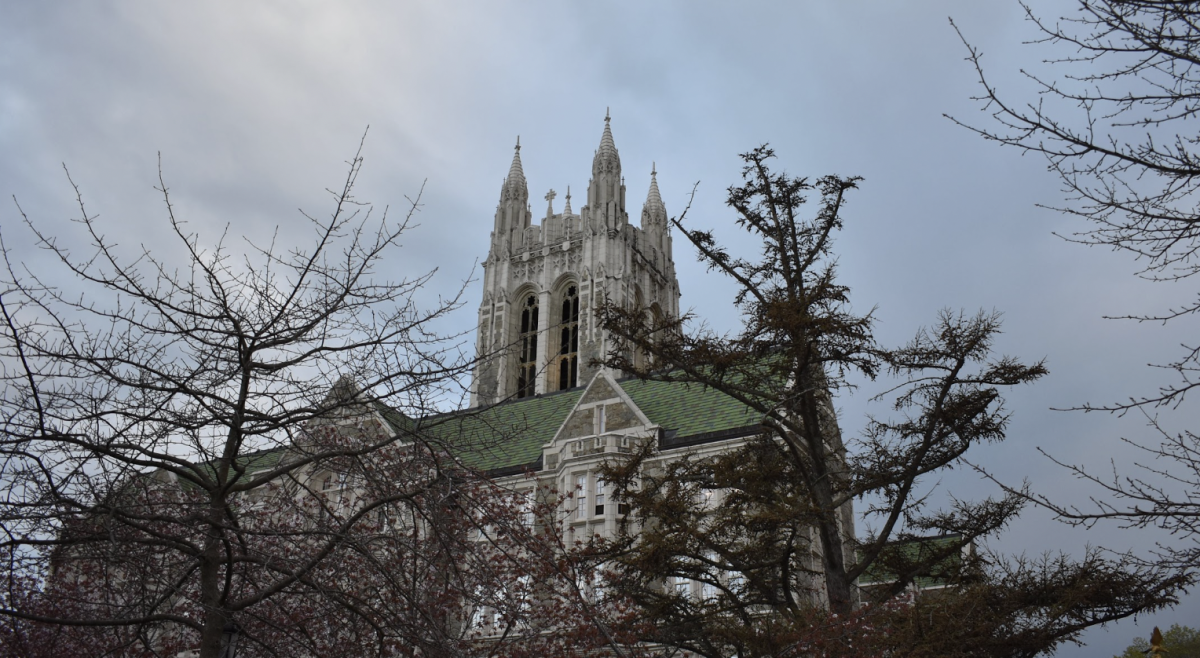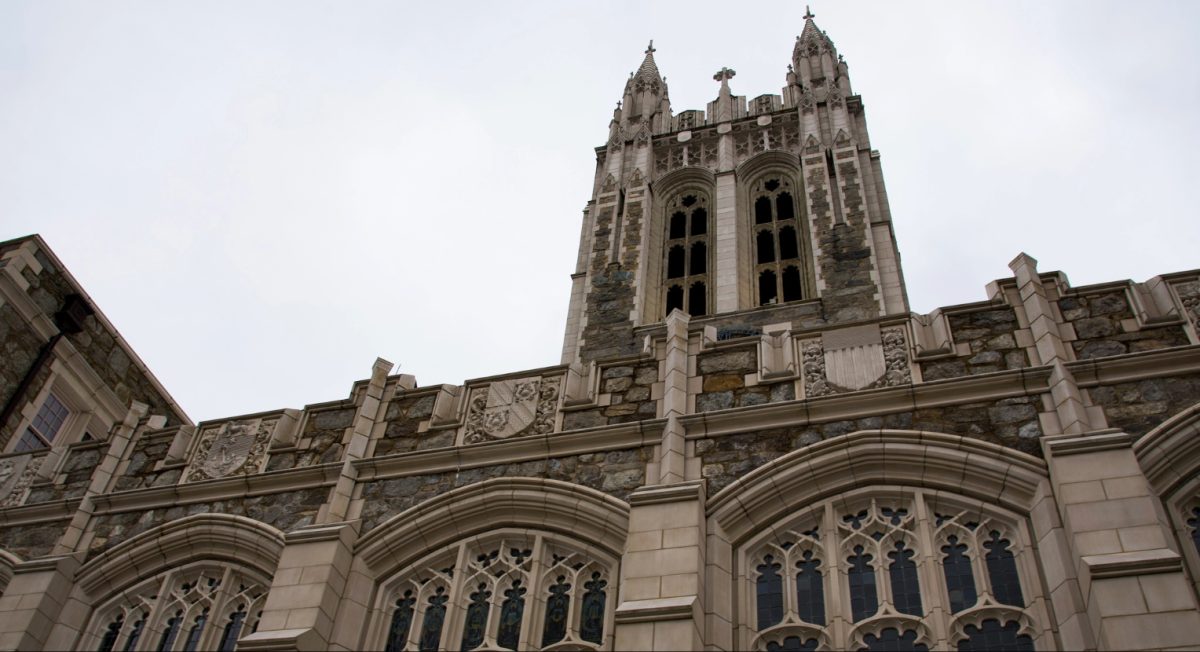Paulo Henrique Alves-Back was in his home office on Nov. 14 when he saw a car suddenly crash through his front yard’s fence after colliding with another vehicle.
Just over 24 hours later, Newton police were dispatched to the very same corner of Watertown Street, Eddy Street, and Eliot Avenue after another two-car crash. Then, as soon as a tow service removed one of those vehicles, yet another collision occurred, according to a police report.
“Accidents—I’ve been here 26 years—they’re too numerous,” Joe Killilea, a resident near the intersection, said. “My son has gone out, pulled a woman out of a car. I’ve gone out and, you know, talked to people and stuff like that. … Thank God nobody ever gets killed.”
Within two days after the accidents, signs reading “DON’T STAND HERE! DEATH TRAP! THREE CRASHES IN 36 HOURS” were placed by the intersection.
Vehicle-related incidents have occurred at this intersection for years. Since 2018, it has seen a total of 15 reported crashes, averaging three per year, according to an email from Newton Police Chief John Carmichael Jr.
“You’re coming from a highway, and you’re kind of conditioned to drive one way, and then you go into a cut street that is not supposed to be a high-speed intersection,” Alves-Back said. “That’s what happens.”
Ward 3 Councilor Julia Malakie also cited speeding and the intersection’s location as factors in the crashes.
“Eliot to Eddy Street or vice versa is the most direct route from Waltham Street to Watertown Street or Washington Street, which is part of the problem,” Malakie said. “So that seems to be why the accidents are happening in the daytime. … People are in a hurry, they get careless.”
The Eliot Avenue and Eddy Street route is a convenient alternative to avoid West Newton Square, a village center known for higher volumes of traffic at the intersection, according to Malakie.
“It’s kind of a confluence of a very busy road—Watertown Street—[and] a very convenient cut-through, which is Eddy/Eliot, for people trying to avoid West Newton Square, which has always been congested,” Malakie said.
Similarly, Ward 5 Councilor-at-Large Andreae Downs said that GPS has contributed to a higher potential for crashes by directing drivers toward residential roads such as Watertown Street, Eddy Street, and Eliot Avenue to avoid traffic and longer trips.
She explained that adjusting speed limits in residential areas could address this issue, forcing navigation apps to direct drivers away from them.
“When we put in a new speed limit, [navigation apps] have to take it into account as if you’re obeying the speed limit,” Downs said. “So that affects the timing of your trip, and they’re more likely to take you on the shorter route, which may be the highway instead of residential streets.”
Responding to the recent crashes, the Newton Department of Public Works Transportation put up flex posts—plastic posts used to guide traffic and alert drivers to possible hazards—along the shoulder of Watertown Street to calm traffic and raise awareness when turning. The city also installed a Rectangular Rapid Flashing Beacon (RRFB) traffic light this fall to help pedestrians cross Watertown Street more safely, according to Newton Director of Transportation Operations Jason Sobel. Additionally, the city recently began collecting traffic data to better determine how road safety can be improved, Sobel said.
Alves-Back, however, said the city has acted slowly in solving problems at the intersection.
“I think 2018, there [was] an email where the city says, ‘Yeah, we’re going to perform a study to understand what to do,’”Alves-Back said. “And ever since the study, I think the only thing that they did until those flex poles [was] painting lines.”
Malakie said these lines, which the city painted to visually extend the corner and promote safer turns, were largely unsuccessful.
“That didn’t work too well because, you know, drivers could just ignore them,” Malakie said.
Killilea also added that the RRFB traffic light is not particularly effective at making cars stop for pedestrians.
“If you stood here during the day and watched people press the light and counted how many cars went through [instead of waiting], the percentage would be, I’d say at least 40 percent,” he said. “I’m not sure people know what a blinking yellow light means.”
Like Alves-Back, Killilea critiqued the city’s response to accidents at the intersection.
“Unfortunately, the only time people in governments do what they should do is when someone gets badly hurt, and you hope it doesn’t happen,” he said.
Killilea said he wants to see the city provide more solutions in the future, such as new traffic lights.
“It’s expensive to put a traffic light there because it’s a state highway, [but] you can put speed bumps,” he said. “And a four-way stop sign is probably the only thing that the city can do without doing something crazy.”
Larisa Pazmino, another resident of the area, also expressed an interest in longer-term action to improve the intersection.
“Right now, they put up traffic calming poles, which I think will help,” Pazmino said. “But you know, I do think that just staying on top of it [and] continuing to communicate with the City Council or with the mayor’s office about this kind of thing is going to be important.”
According to Malakie, flex posts have led to more permanent solutions in the past, like at the intersection of Lowell Avenue and Austin Street in Newtonville—a high-crash area with frequent trucks headed toward Star Market.
“They had flex posts there to extend the curb lines at that intersection as kind of a test, and we just recently approved money to kind of make the curb extensions permanent,” she said. “So it’s kind of a good way to test something that you want to make permanent.”
Downs said she hopes to specifically address speeding in residential areas throughout Newton.
“I’ve been asking our traffic engineers repeatedly to find ways and I’m actually talking with people at the state level about different ways that we can … lower limits that are just too high for residential areas where kids are biking or walking to school,” Downs said.
The limited nature of the city’s traffic-calming budget and the large number of intersections and well-traveled roads in Newton, however, mean that this specific location likely will not see immediate, large-scale change, according to Downs.
Other higher priority areas of the city, such as Lowell Avenue take precedence in the allocation process, Downs said.
Eddy Street ranked No. 30 in the 2019 traffic calming prioritization evaluation, while Eliot Avenue ranked No. 79, according to Downs, who chairs the Newton Public Safety and Transportation Committee.
The city determines these rankings using the site’s crash statistics, the severity of speeding, vehicle volume, and proximity to highly frequented areas.
Despite the lower ranking, Downs said it is important to remedy the intersection’s dangers.
“A really important part of being a livable city, where people feel comfortable walking to do their errands or biking to do their errands or whatever, and feel comfortable letting their kids walk to school on their own, is having the streets be safe,” Downs said.



